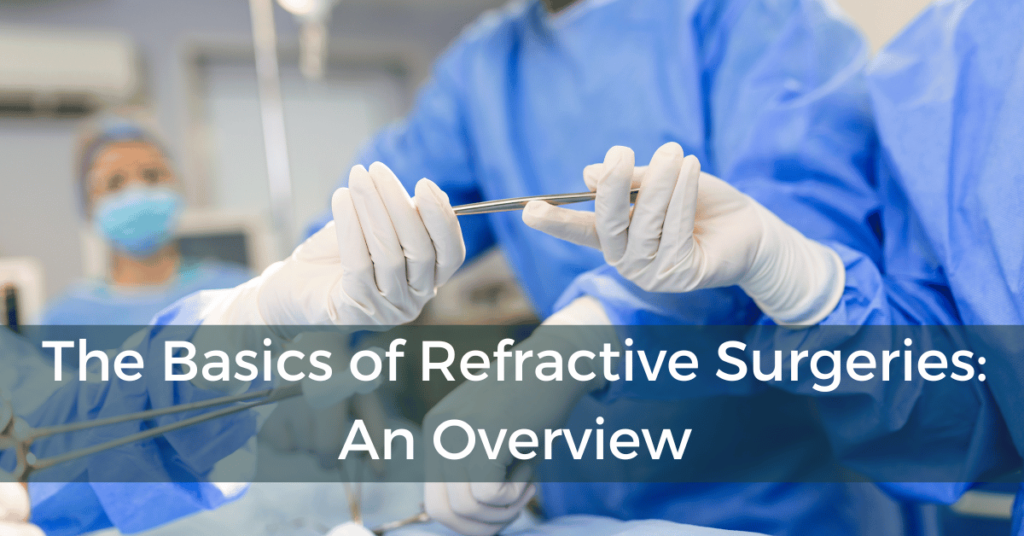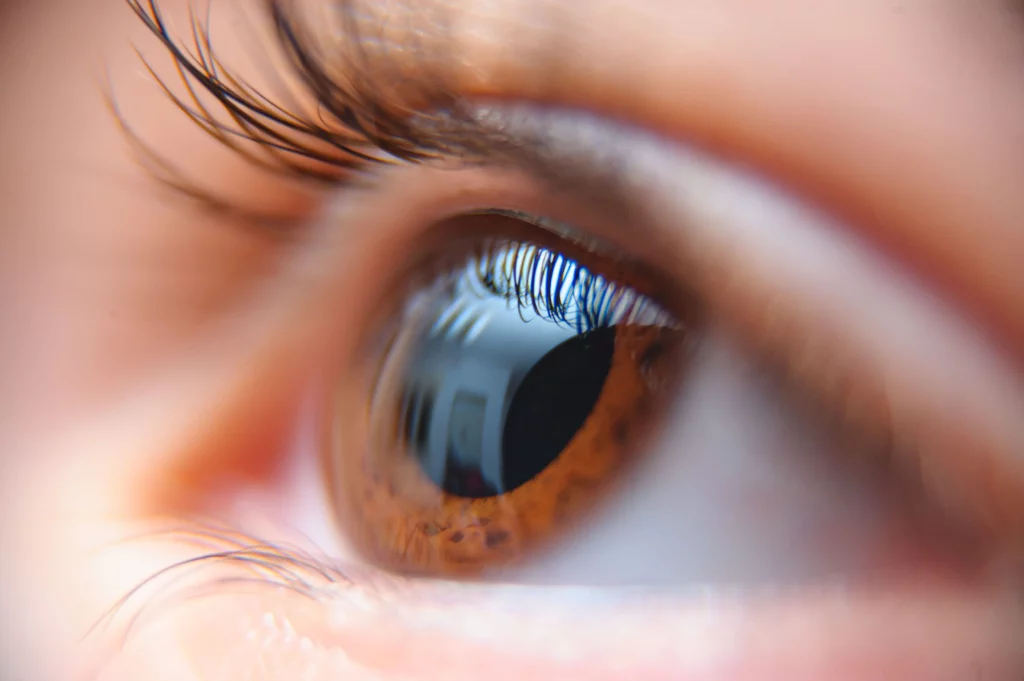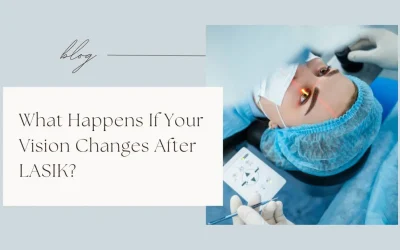The Basics of Refractive Surgeries: An Overview

Refractive surgery is a surgical procedure that aims to correct refractive eye errors, such as nearsightedness, farsightedness, and astigmatism. These procedures have become increasingly popular, with millions opting for them to improve their vision. This article will overview the most common types of refractive surgeries, including LASIK, PRK, SMILE, ICL, and RLE.
LASIK

Refractive surgery, known as LASIK or Laser-Assisted In Situ Keratomileusis, is the most commonly performed procedure worldwide for correcting refractive eye errors such as astigmatism, farsightedness, and nearsightedness. This procedure creates a thin flap in the cornea using a femtosecond laser or microkeratome. The underlying cornea is reshaped using an excimer laser, and the flap is put back in place after the reshaping is completed. Although LASIK is a quick and painless procedure, it is not suitable for everyone and is associated with potential risks and complications. It is important to seek the advice of an experienced ophthalmologist to determine if LASIK is suitable for your needs. Most people can return to work or resume regular activities following LASIK within a day or two.
PRK

PRK, or Photorefractive Keratectomy, is another type of refractive surgery similar to LASIK. However, instead of creating a flap, the top layer of the cornea is removed entirely. The underlying cornea is then reshaped using an excimer laser, just like in LASIK. The removed layer grows back naturally over time.
PRK is a suitable alternative to LASIK for people with thin corneas or other corneal abnormalities that may make LASIK unsuitable. However, the recovery period after PRK is more prolonged and uncomfortable than LASIK, and it may take up to a week for the vision to stabilise.
SMILE
SMILE, which stands for Small Incision Lenticule Extraction, is a relatively new type of refractive surgery gaining popularity. This procedure involves making a small incision in the cornea and using a femtosecond laser to extract a small piece of corneal tissue with a lens-like shape. The removal of this tissue helps to reshape the cornea and correct any refractive errors that the patient may have.
SMILE is a minimally invasive procedure less likely to cause dry eyes or other complications than LASIK or PRK. It also has a faster recovery time, with most people able to return to work or resume their regular activities within a day or two after the surgery.
ICL
ICL, or Implantable Collamer Lens, is a type of refractive surgery involving implanting a small lens in front of the natural lens. The lens is made of a biocompatible material well-tolerated by the body. This lens corrects the refractive error and provides clear vision.
ICL is suitable for unsuitable LASIK, PRK, or SMILE candidates. This includes people with extreme refractive errors or thin corneas. ICL is a safe and effective procedure that provides excellent visual outcomes.
RLE
RLE, or Refractive Lens Exchange, is a type of refractive surgery involving removing and replacing the natural eye with an artificial lens. This is similar to cataract surgery, but a clear lens is inserted instead of removing a cloudy lens to correct the refractive error.
RLE is a suitable option for people with presbyopia,
Conclusion:

In conclusion, refractive surgeries have become increasingly popular to correct vision problems in recent years. LASIK, PRK, SMILE, ICL, and RLE are different types of refractive surgeries, each with benefits and risks. It is essential to consult with an experienced ophthalmologist and discuss which option is best for your individual needs and circumstances. While refractive surgeries can be highly effective in correcting vision, weighing the potential risks and benefits before deciding is essential. With the proper precautions and aftercare, refractive surgeries can provide a long-term solution for improved vision.
Book your appointment now for all eye-related services at Hyderabad’s best eye care hospital.
Your Vision Our Focus


